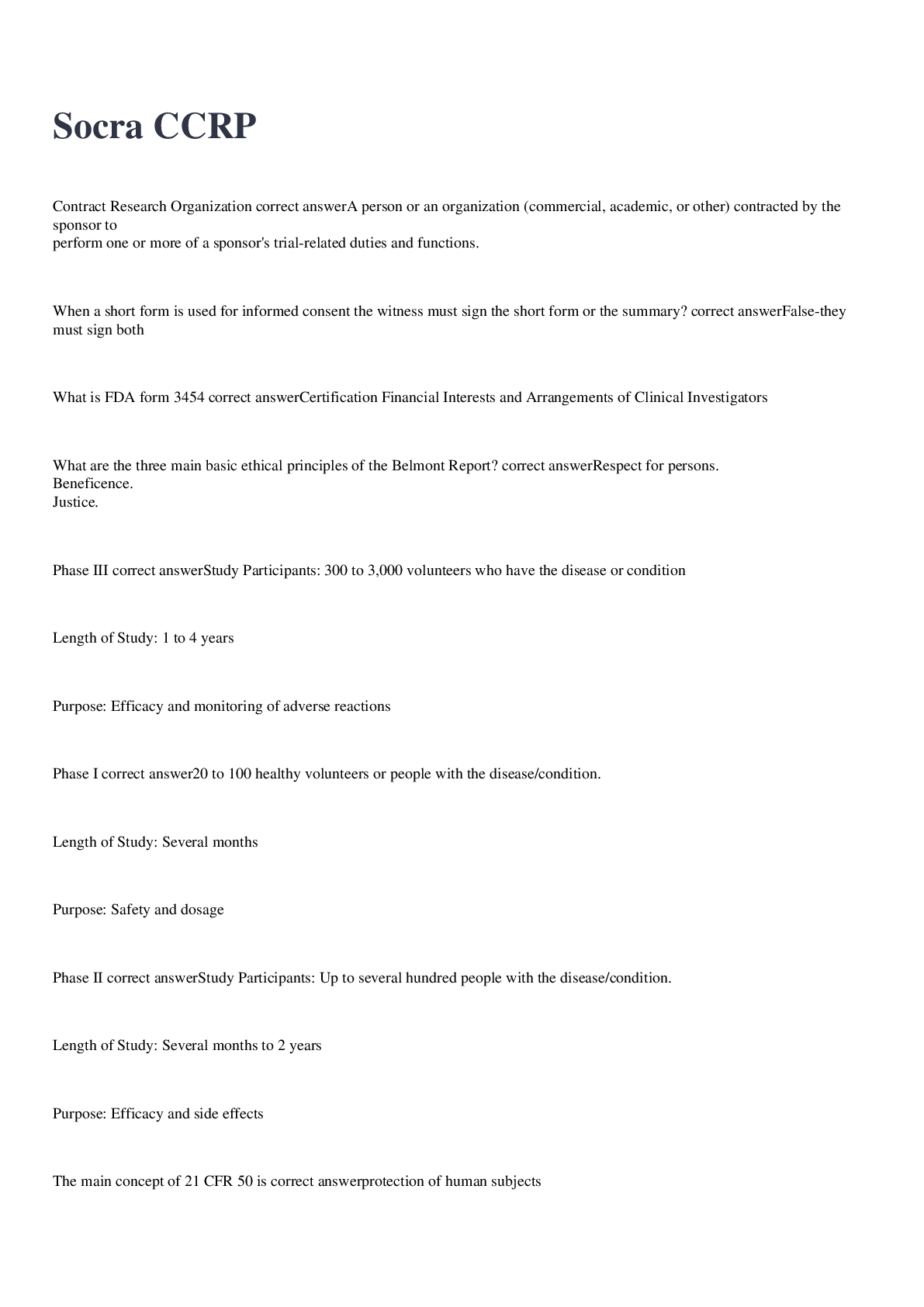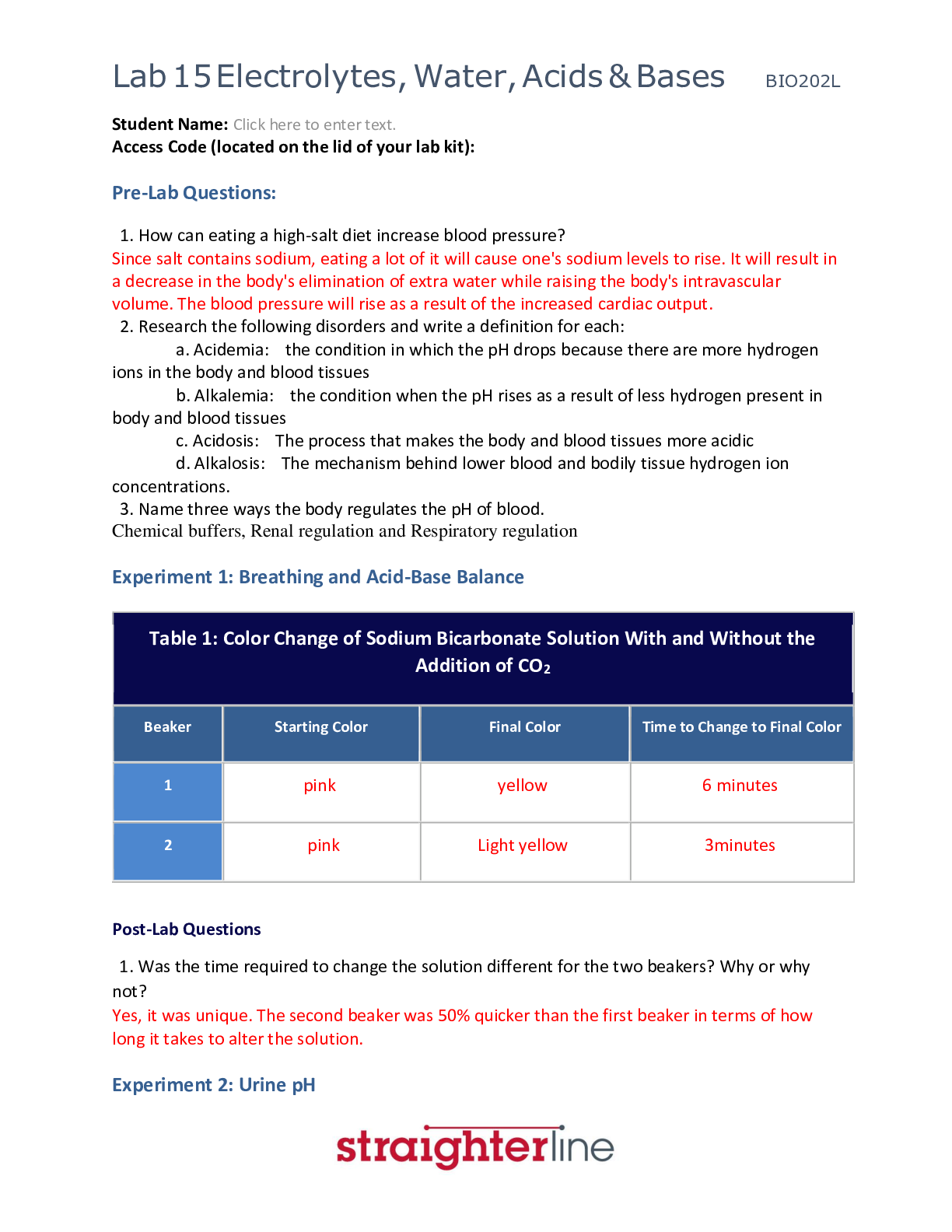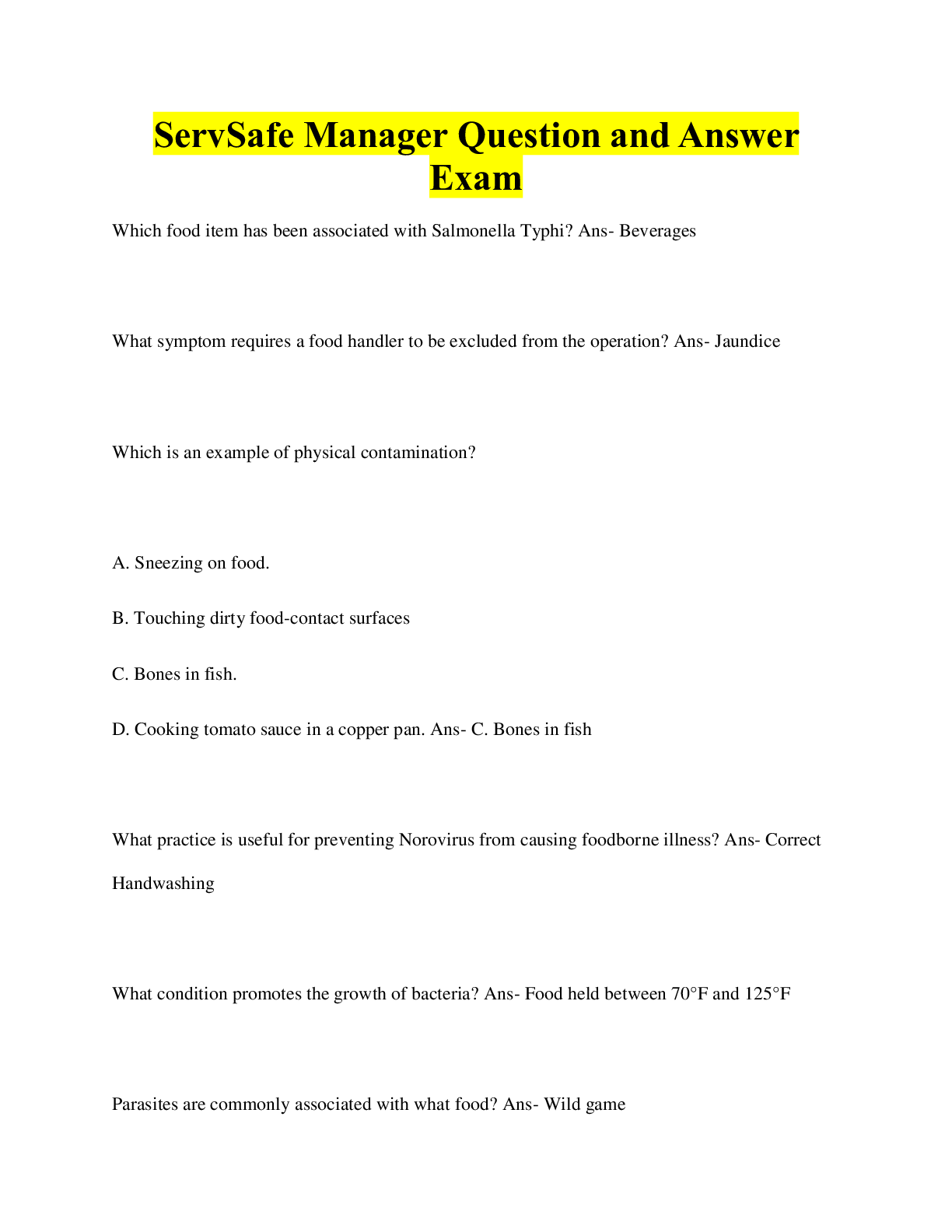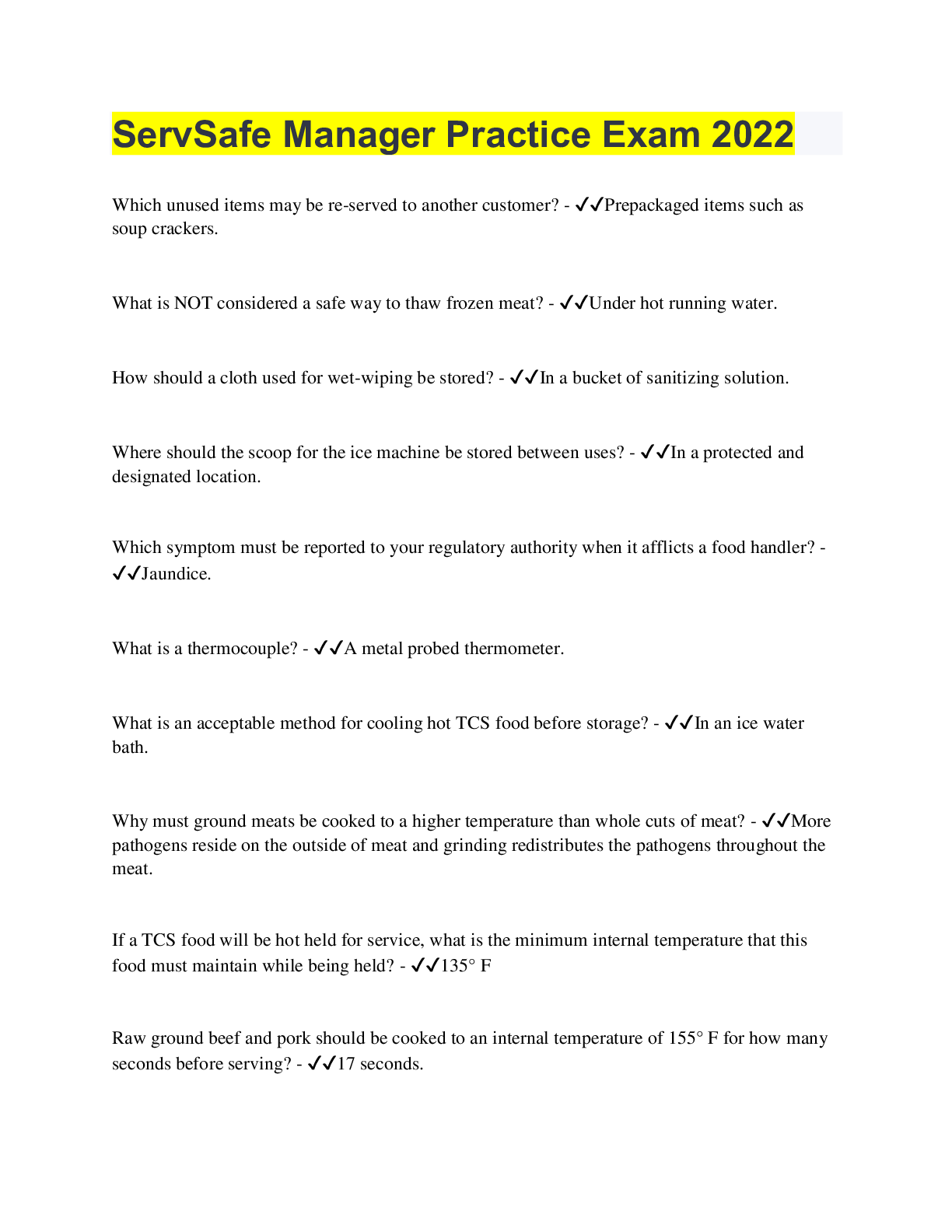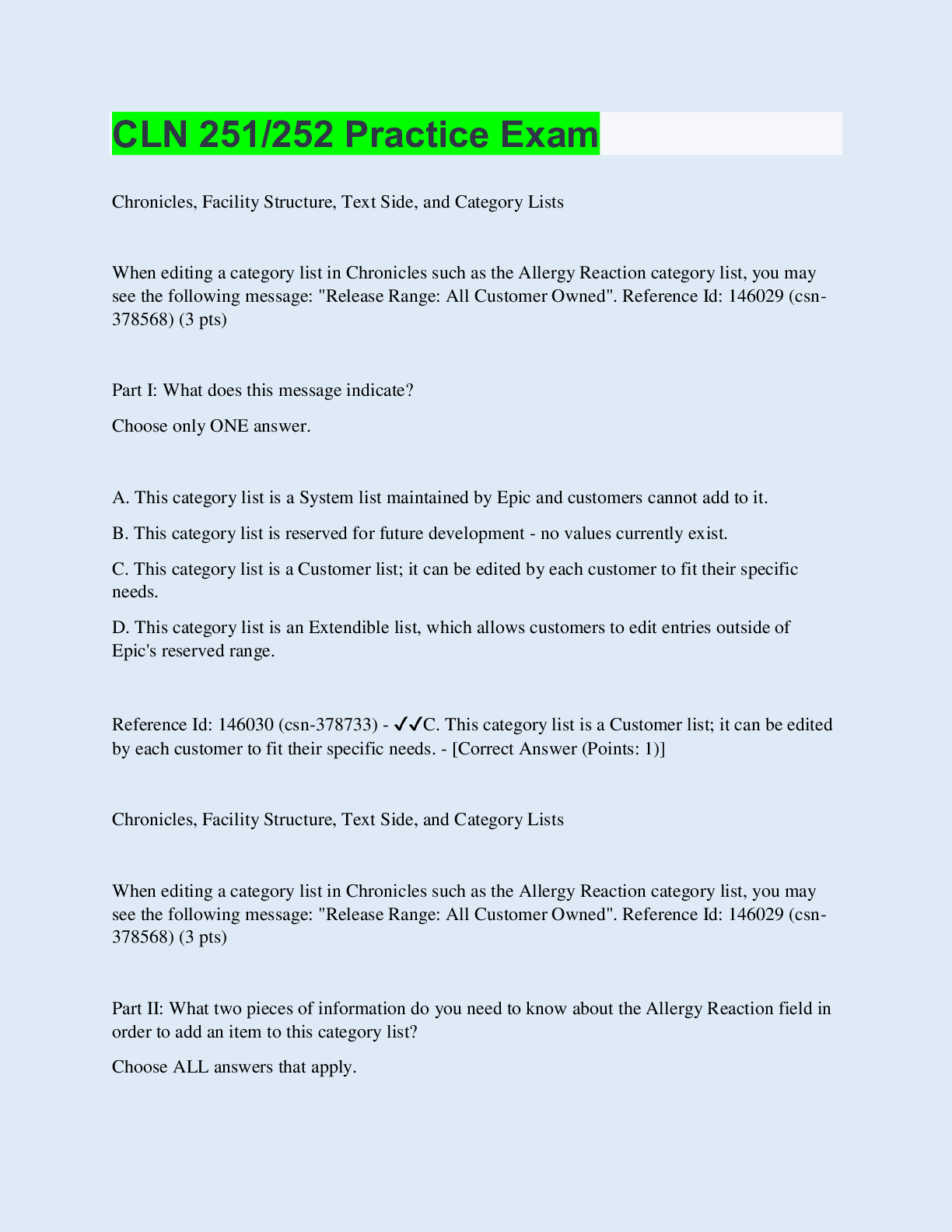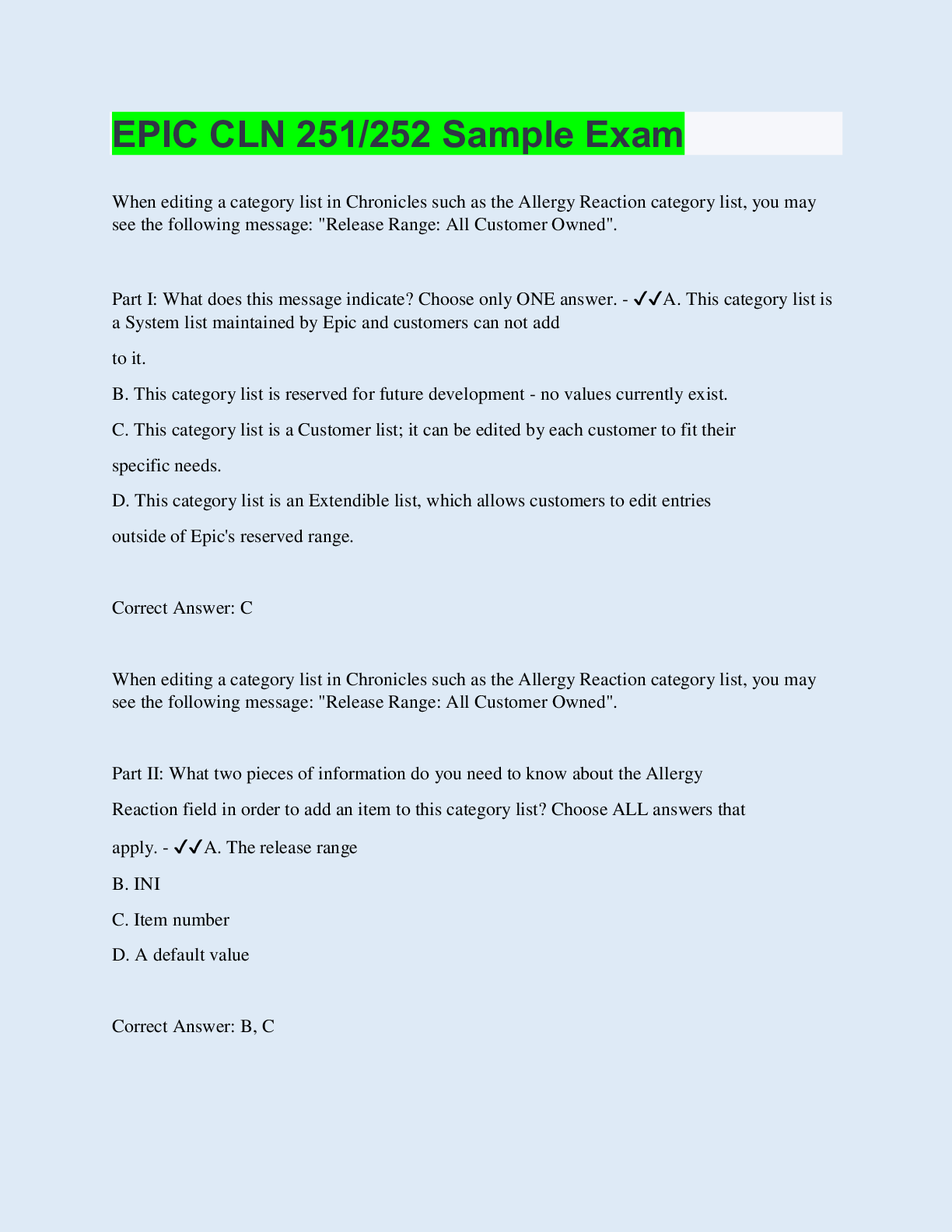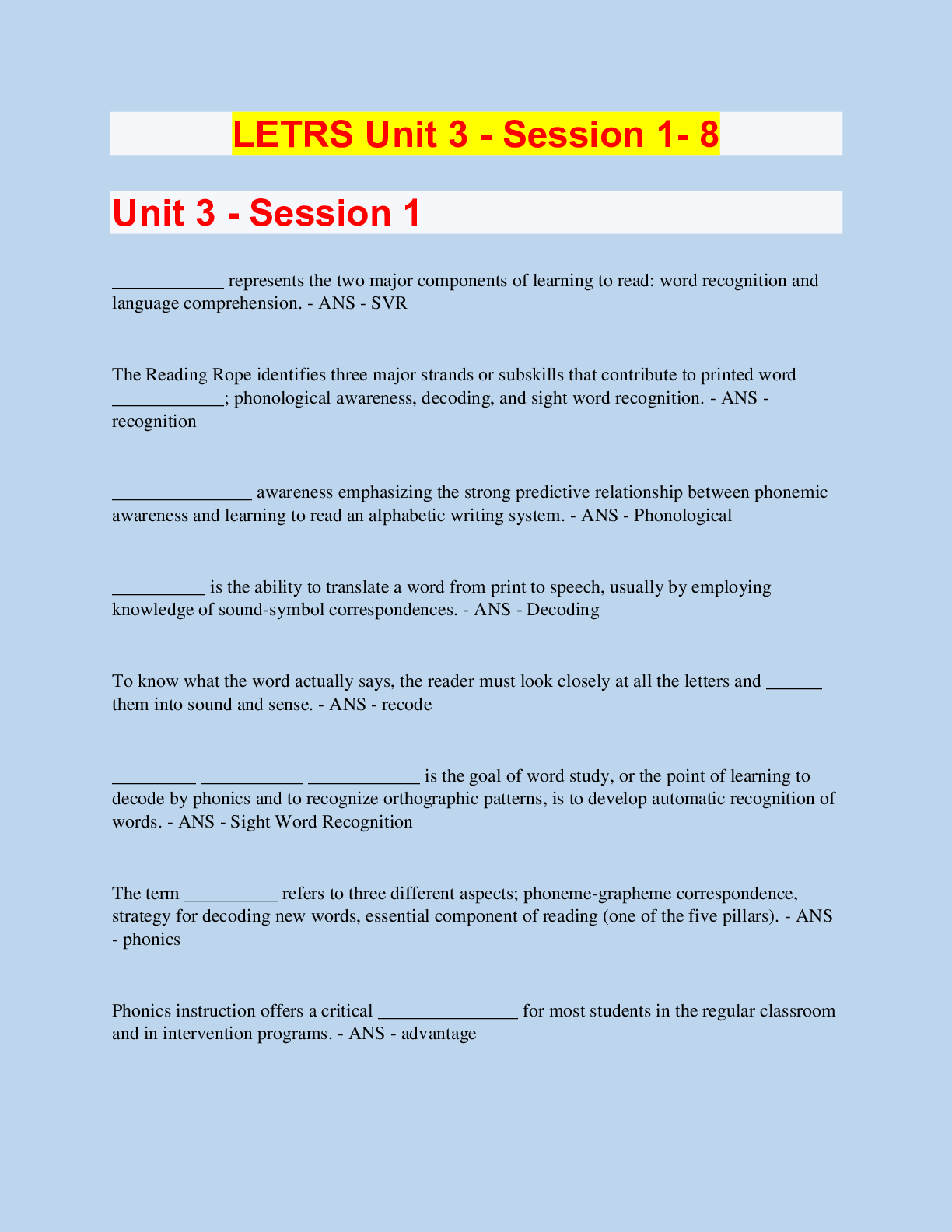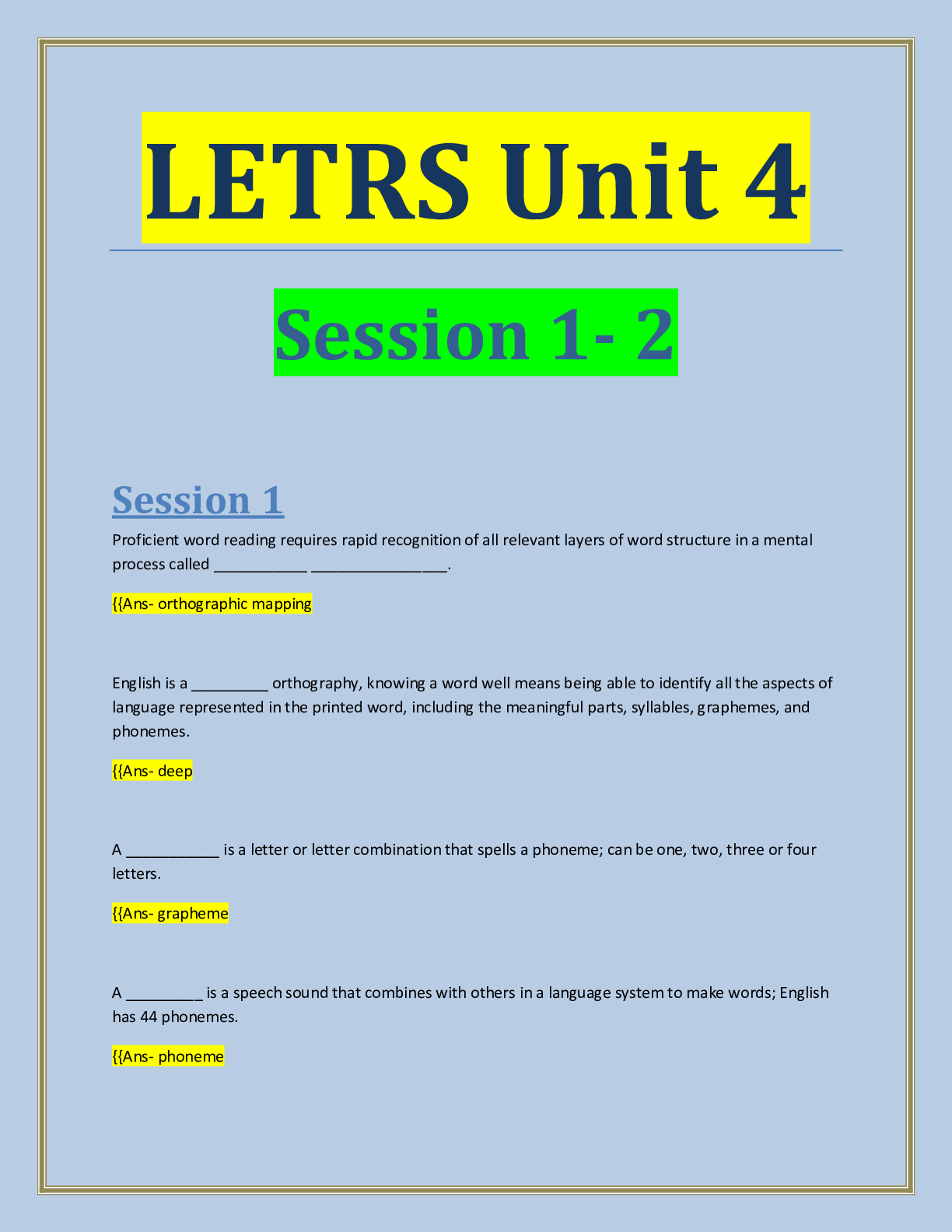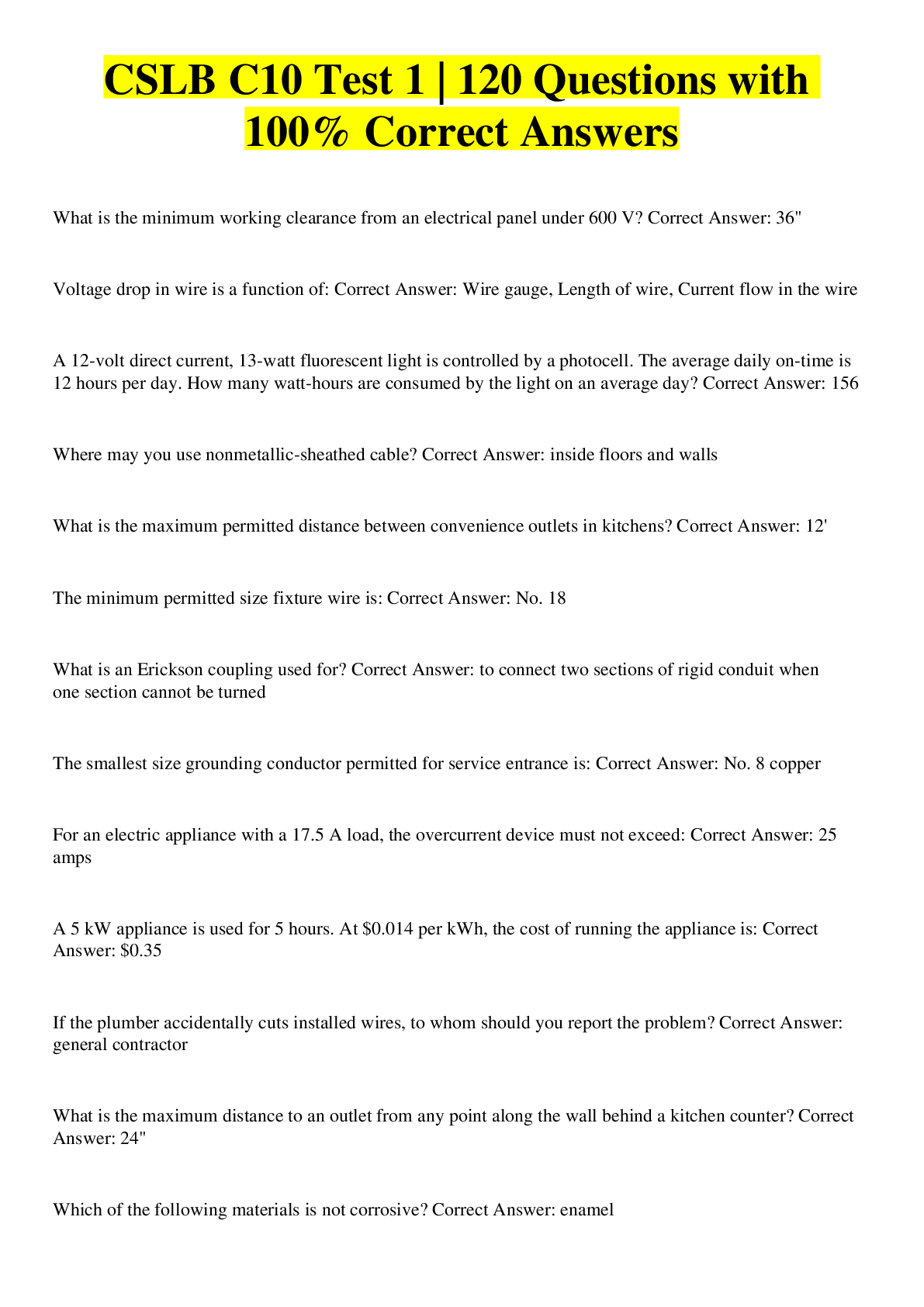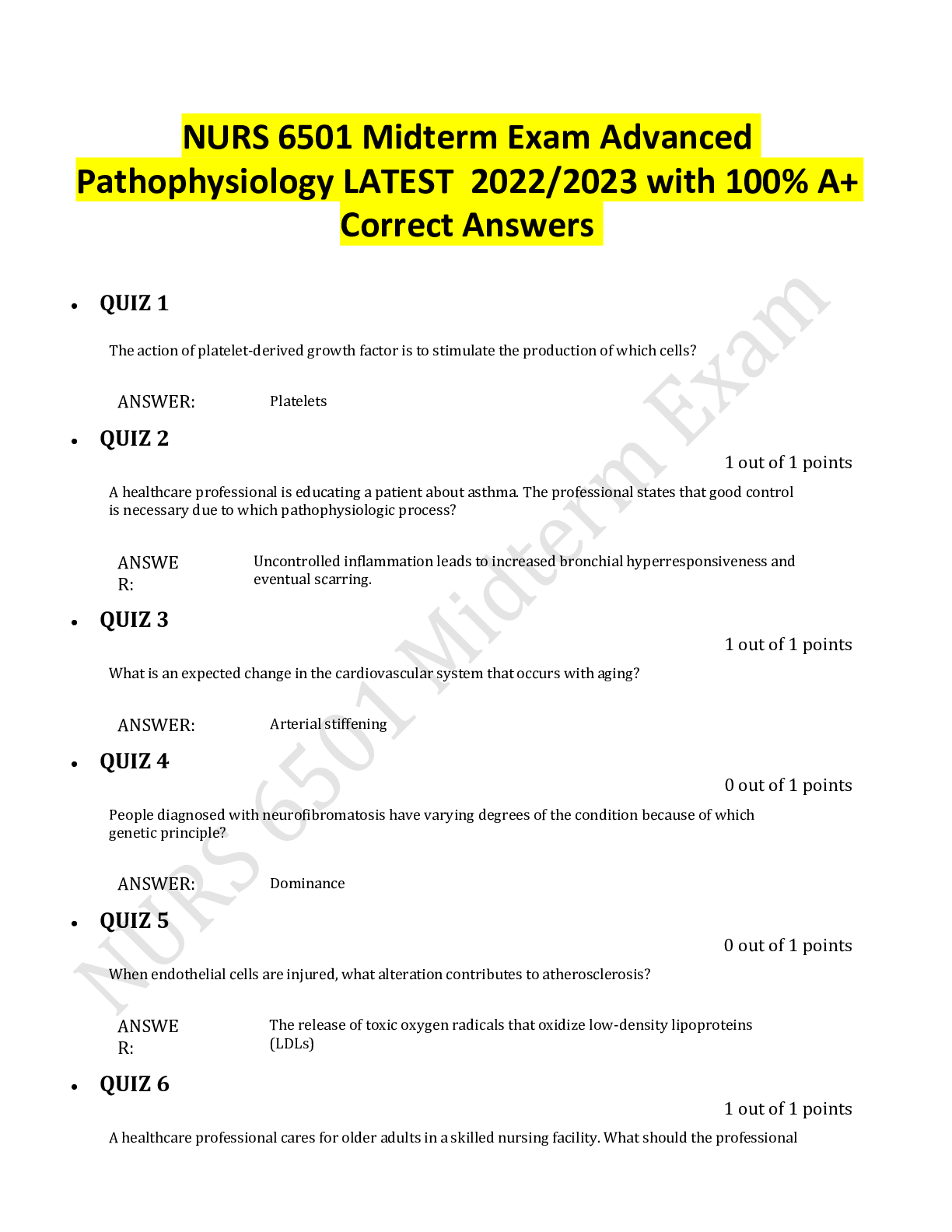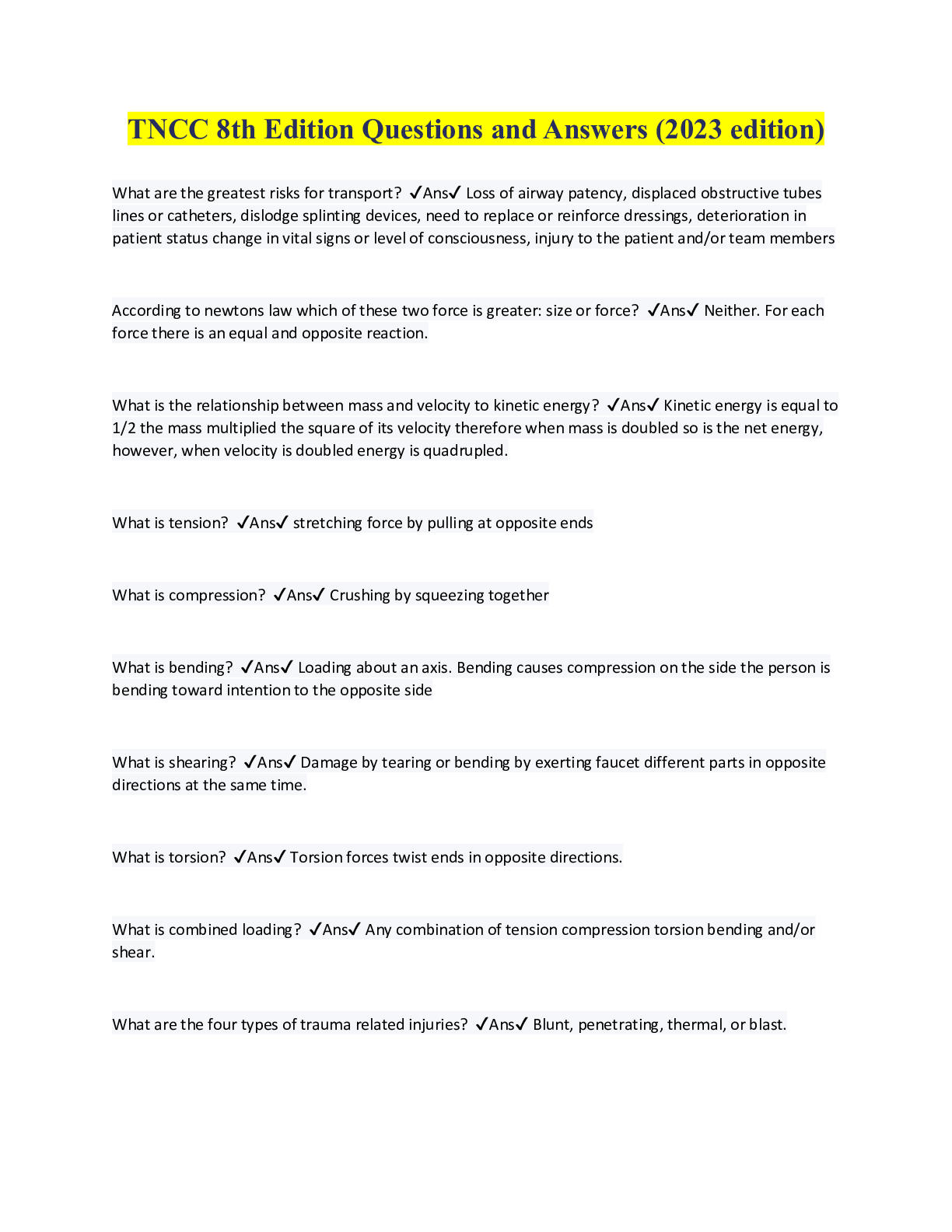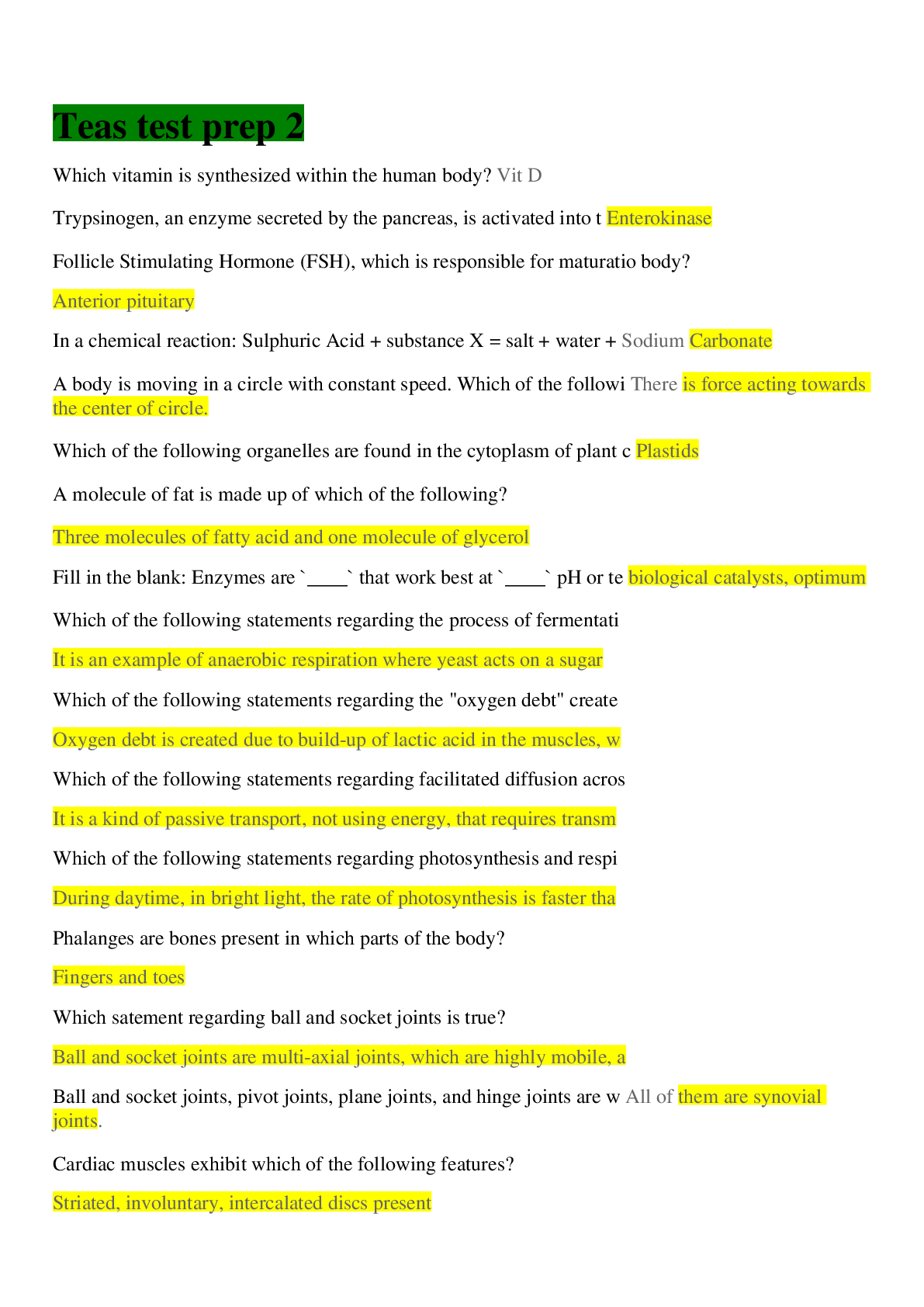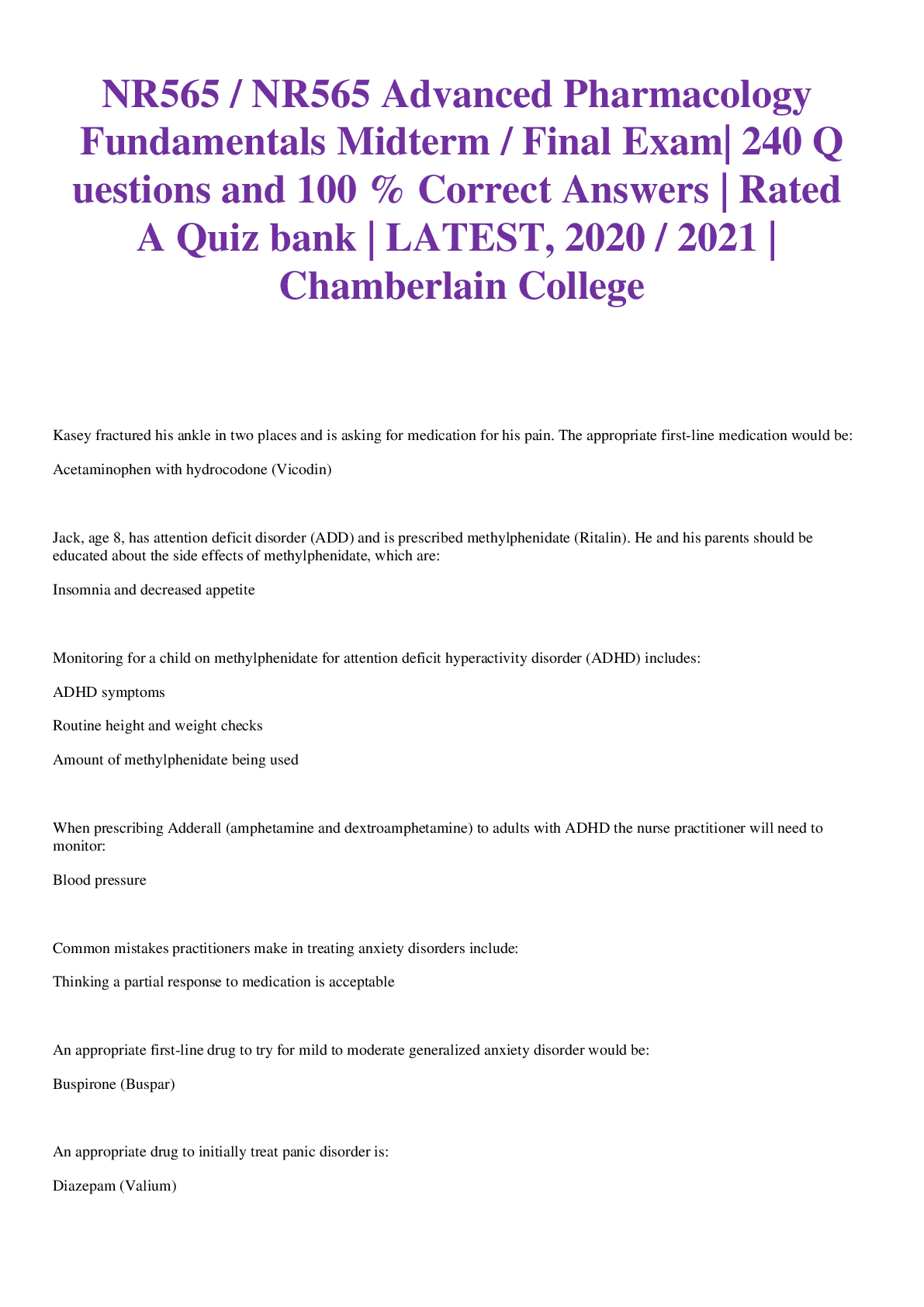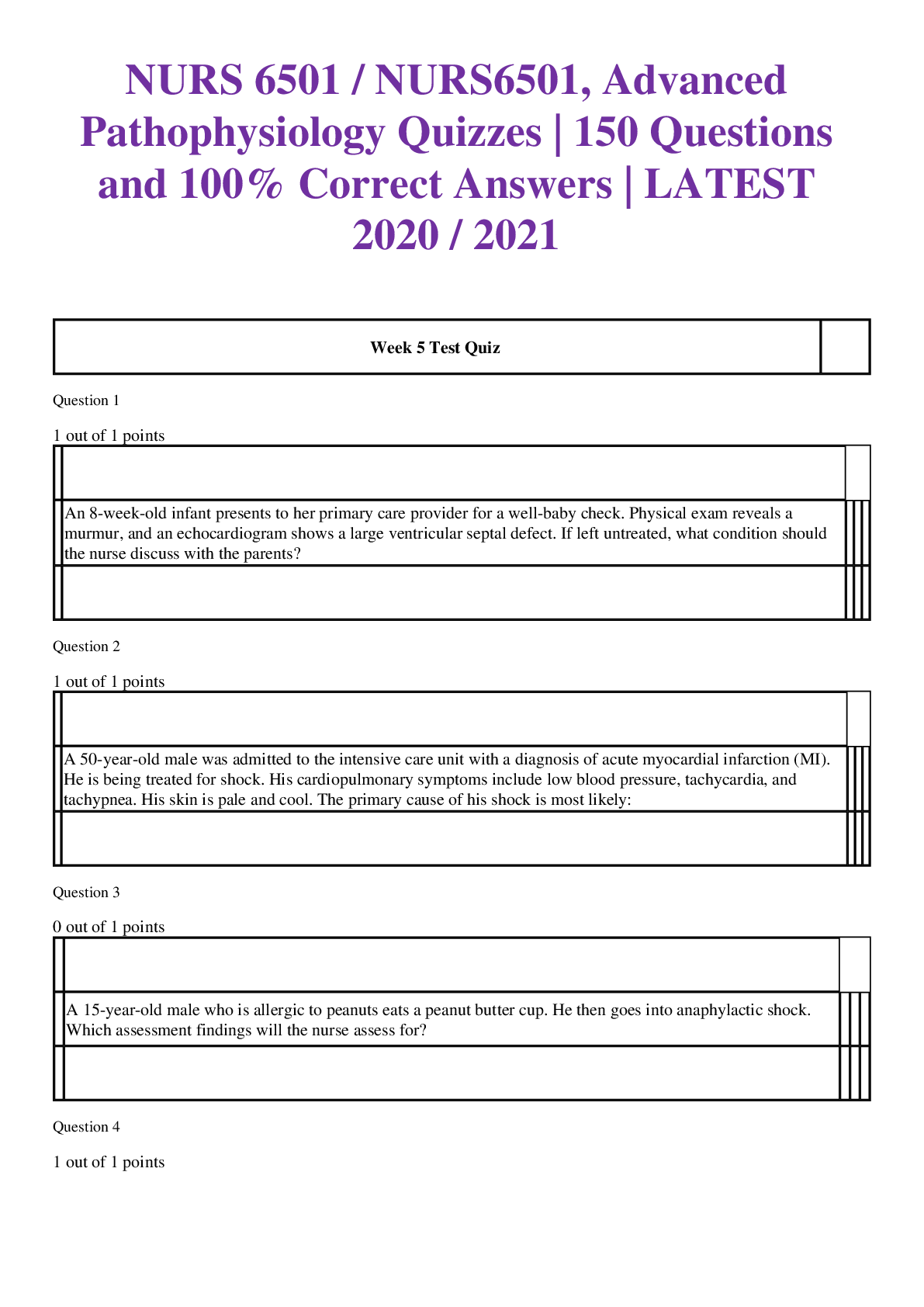Anatomy and Physiology - A&P 1 > EXAM > BIOS 251 Week 7 Lab Assignment: Joints | 100% correct answers (All)
BIOS 251 Week 7 Lab Assignment: Joints | 100% correct answers
Document Content and Description Below
OL Lab 7: Joints Learning Objectives: • Identify the structures of the synovial joints and its related functions. • Identify the structural and functional classification. • Identify the diff... erent types of movements produced by the synovial joints. Part A: For this part of the lab you will use Anatomy TV to explore the synovial joints in skeletal system and correlate the anatomical structures to its functions. Please read the instructions before you begin. Instructions: 1. Use the link below to log into Anatomy TV via Chamberlain Library. https://library.chamberlain.edu/az.php?q=. 2. Select Anatomy TV under popular databases to access the site. 3. Select the ‘skeletal system’ tile: 4. From the skeletal system module, select the interactive learning module on the left hand side of the page. Analysis of Joints: 5. Select the interactive learning: Joints Select the ‘synovial joints’ interactive circled in red. 6. On the image identify and select a one anatomical structure at a time. The selected region will appear highlighted. 7. Use the controls at the bottom of the page as required. Follow the recommendations provided for each structure. 8. Take a screen shot of the image or save the image using the download icon on the right hand side tab. 9. Create a word document titled “lastname_Lab 7”. Import the image into the document. Use the functions ‘Insert’ and ‘tool’ (shapes) on word to label the images. 10. In a complete sentence, write the functional role of the selected anatomical structure under the image. 11. Save the file before you proceed to the next structure. 12. Follow these steps to analyze all the structures listed below. a. Femur b. Tibial collateral ligament c. Joint capsule d. Supratellar bursa e. Tibia f. Medial meniscus Use the layer controls to remove/add layers ending on layer 10 and rotation controls to rotate the model to frame 9 for the following structures. g. Synovial fluid h. Patella i. Patellar ligament j. Articular hyaline cartilage k. Fat pad Part B: Read the case study. In your own words and in complete sentences answer the questions: John, a 75-year-old man, was diagnosed with osteoarthritis in his knee five years ago. Recently his condition worsened and so decided to see a doctor. John’s doctor ordered a radiograph imaging in order to visualize his knee joint. a. What is osteoarthritis? What symptoms will John experience? (3 points) Osteoarthritis is a condition in which the articular surfaces of joints degrade and bone under the articular surfaces can erode and break away. John will experience pain in affected joints during or after movement, joint stiffness, tenderness, loss of flexibility, grating sensations, bone spurs and swelling. b. What type of joint is the knee? (1 point) The knee joint is a synovial hinge joint. c. What is the meniscus in the knee and state its function? (2 points) Within the knee joint, attached to the tibial condyles, are two fibrocartilaginous discs: the medial and lateral menisci. The menisci increase the congruence between the articulating surfaces of the tibia and femur. d. What is the role of articular cartilage in a synovial joint? (2 points) Articular cartilage is a thin layer of hyaline cartilage covering the articular surfaces of the bones within a joint. The function of this cartilage is to reduce friction between the bones and to act as a shock absorber as the joint moves. e. What is the role of synovial fluid? (2 points) The main function of synovial fluid is to lubricate the joint, helping to reduce friction between the articular cartilage, and to absorb shock created by movement. Part C: Movements of Synovial Joints: Critical thinking Questions: In your own words and in complete sentences answer the following questions: a. What are the movements involved when you shrug your shoulders? What is the functional classification of the shoulder joint? (3 points) The movements involved are elevation and depression. The functional classification is Ball and Socket joint. b. Identify the type of movement at the hip and shoulder joints when you perform jumping jacks? ( 2 points) The type of movements in the shoulder are Shoulder abduction and rotation while in the hip are hip abduction and adduction and hip extension. c. Why do individuals with overpronation might exhibit uneven wear on the inside of the midsole? ( 2 points) Overpronation means that your foot rolls inward as you move. If you overpronate, the outer edge of your heel hits the ground first, and then your foot rolls inward onto the arch. d. What are the joints and the movements involved when kicking a soccer ball? (3 points) The joints involved are the hip, knee and ankle joint. The movements involved are; Hip joint: flexion and extension, adduction and internal rotation Knee joint: flexion and internal rotation Ankle joint: flexion Grading Rubric: Activity Deliverable Points Part A Lab report on Synovial Joints 10 Part B & C Answer all the questions - Part B 10 10 - Part C Total Complete all lab activities 30 [Show More]
Last updated: 1 year ago
Preview 1 out of 5 pages
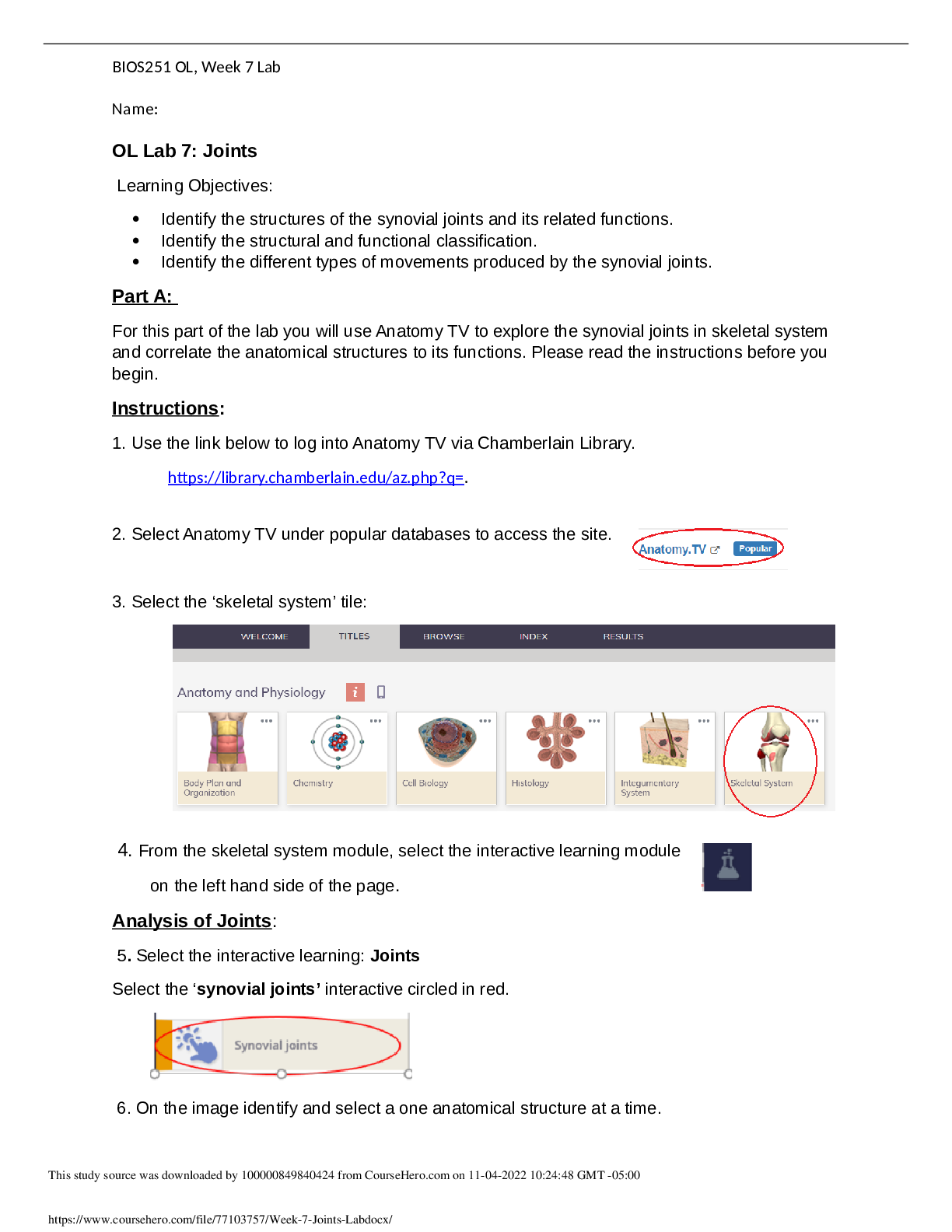
Reviews( 0 )
Document information
Connected school, study & course
About the document
Uploaded On
Nov 04, 2022
Number of pages
5
Written in
Additional information
This document has been written for:
Uploaded
Nov 04, 2022
Downloads
0
Views
100





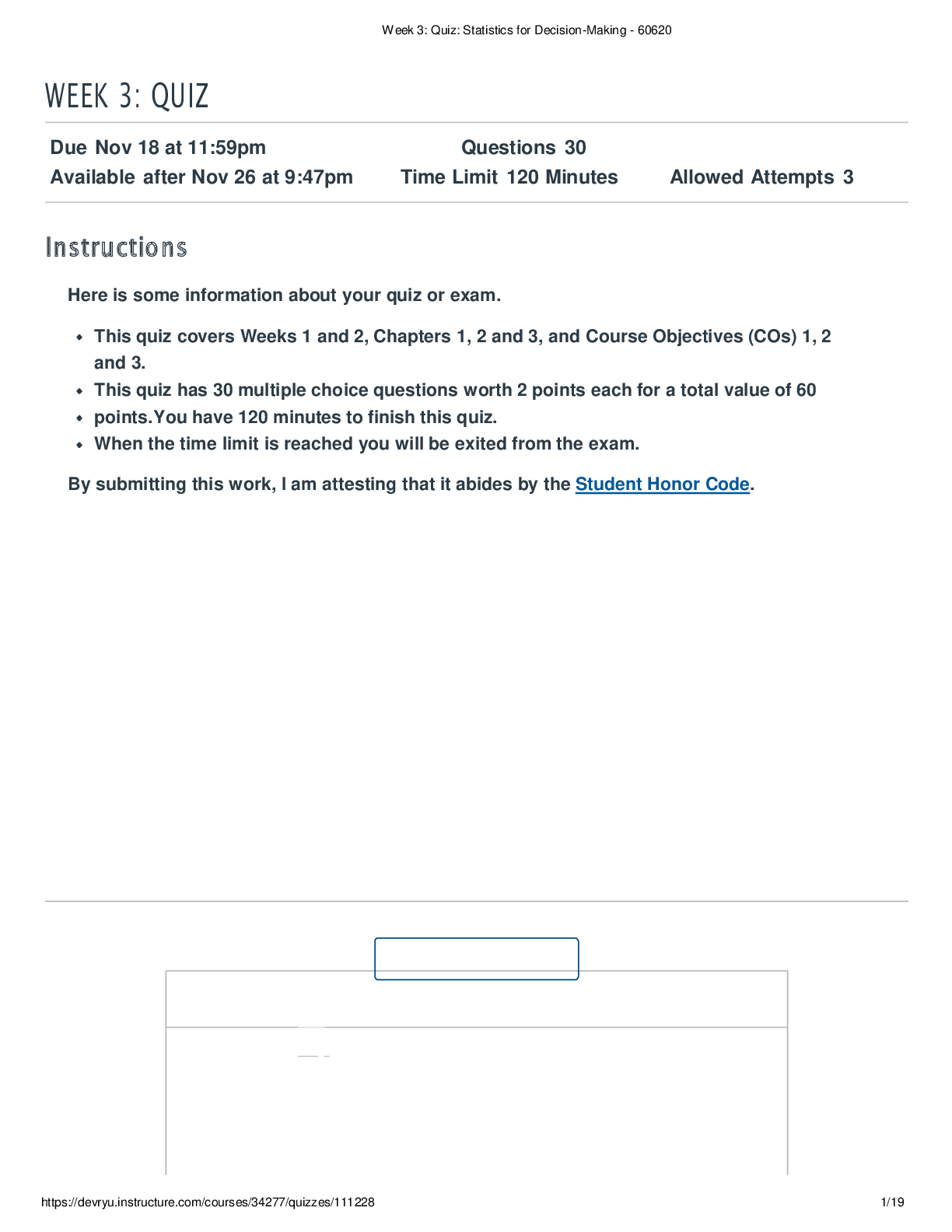

.png)










